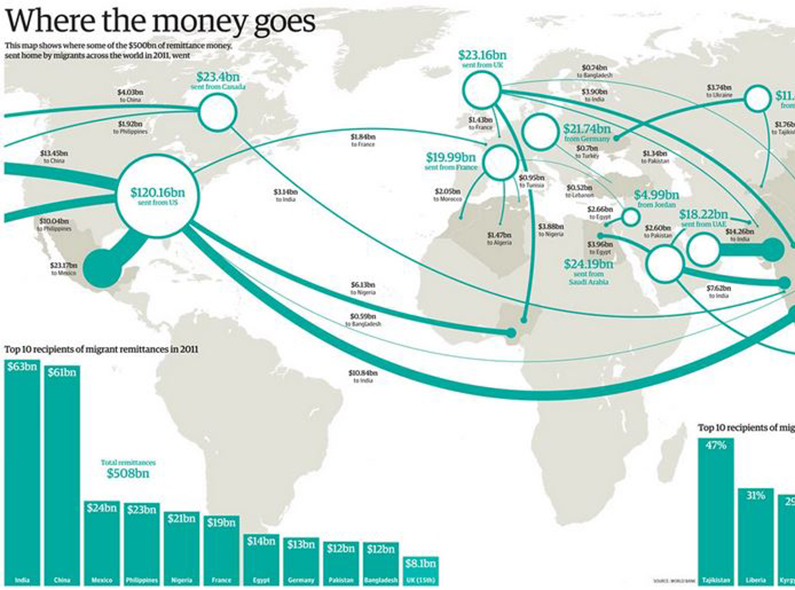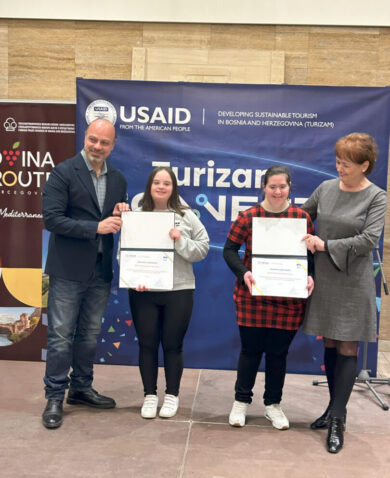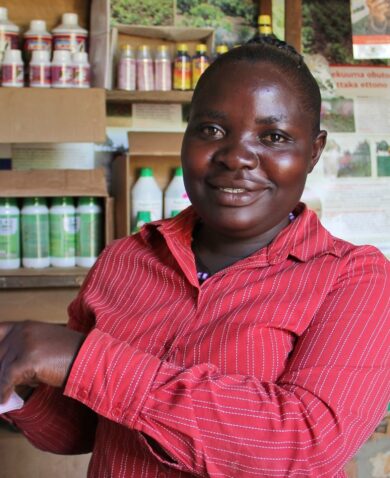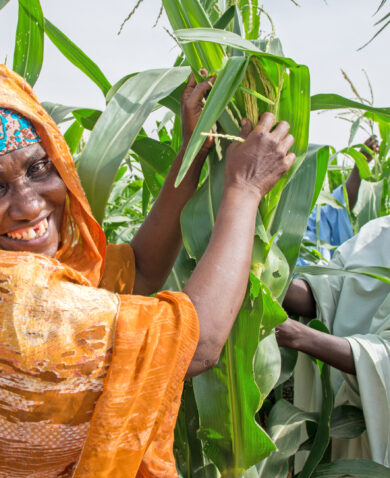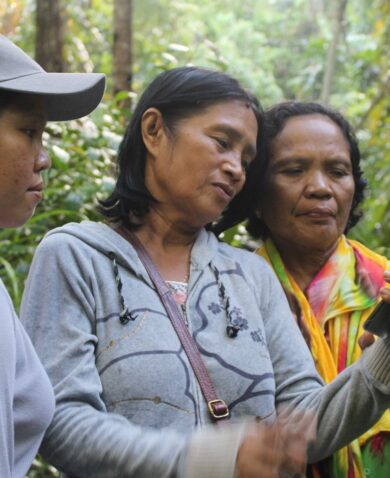
What Have We Learned About Engaging Diasporas?
October 13, 2015 | 4 Minute ReadDiasporas play a vibrant role in global development. During Global Diaspora Week, Christy Sisko offers lessons learned on engaging diaspora communities.
Globally, the number of people living outside their country of origin has almost tripled — from 76 million to 232 million — over the past 45 years. For many who leave their homes, starting a new life in search of refuge, employment, education, or other factors does not mean disregarding their heritage or the family and friends they left behind. Motivated by diverse factors, such as emotional ties, economic opportunity, social status, and political influence, diaspora communities have been giving back to their home countries for many years.
This week marks Global Diaspora Week (GDW), which is dedicated to diaspora communities and their contributions to global development. GDW is intended to create awareness, enable collaboration, and enhance learning among those working with diaspora communities around the world. With a growing global diaspora and its desire to maintain ties back home, diaspora communities are granted names like “the wings of development” for good reason. In terms of economic engagement, diaspora communities provide remittances, invest in capital markets or businesses, provide market linkages, start their own business, and facilitate business cooperation. Remittances alone are a major source of capital for many developing countries, as the graphic below from The Guardian shows. Social engagement often takes the form of transferring knowledge, volunteering, and participating in humanitarian efforts and advocacy.
How can the global development community partner with diaspora communities to make progress under the Sustainable Development Goals, including closing the financing gap? To help celebrate Global Diaspora Week, I would like to consolidate several best practices that can be kept in mind while engaging diaspora in development. Although not all-inclusive, I hope this list will spur conversation on how we can best work with diaspora communities to accomplish joint goals for creating prosperous economies and societies.
- Diaspora communities vary immensely, and their desire for engagement and means to do so are different. Engaging diaspora in development is not a one-size-fits-all initiative.
- A market lens is needed when designing programs for diaspora engagement so diaspora are getting to invest in what interests them and what is meeting market demands locally.
- Communicating the return on investment to diaspora communities is important so that they can see the impact they are having in their home country.
- Facilitating a positive enabling environment for foreign investment is crucial so investors do not face debilitating barriers to entry.
- Establishing strong communication with diaspora communities is needed so that diaspora members feel connected to the communities they are investing in, have interpersonal connections with local decision makers, and can easily gain access to information on potential investments.
- Local governments should know their investment needs and be ready and able to communicate the investment opportunity to diaspora.
- Local governments need to think beyond what diaspora can do for them and to keep in mind what they can do for their diaspora.
Who has been engaging diaspora communities the right way? There are several countries and initiatives that seem to have cracked the code to engaging their diaspora communities in development. China has experienced a remarkable investment boom over the past three decades and has become a model for many emerging countries. Foreign direct investment increased from $600 million in 1983 to $40 billion in 2000, before jumping to $117.6 billion in 2013. The Chinese diaspora is the leading investor, with diaspora members providing 70 percent of China’s recent foreign investment, according to Bloomberg. There are many reasons why China has had such great success. China has an open policy, tax regime, and policy support to Chinese diaspora members as venture capitalists, who also provide global platforms to native Chinese entrepreneurs. Chinese diaspora communities have also taken on a significant role in promoting the country’s economic interest in Southeast Asia to spur investment from neighboring countries.
In Liberia, the The Khana Group and the Liberian Professional Network established the Liberian Diaspora Fund to channel remittances from the diaspora toward investments in small and medium enterprises (SMEs) in Liberia to help fight poverty and create jobs in a sustainable manner. Using a shared-risk arrangement, 75 percent of the fund originates from the diaspora, while the remaining 25 percent investment comes from multilateral organizations such as the US Overseas Private Investment corporation (OPIC), the World Bank, USAID, and other sources. In addition to providing investment to entrepreneurs, the fund also offers training in critical business skills, accounting, and marketing to entrepreneurs and mentorship by pairing entrepreneurs with experts.
In January 2015, USAID and the Calvert Foundation launched the Indian Diaspora Investment Initiative, through which U.S.-based retail investors will be able to purchase Community Investment Notes offered by Calvert Foundation. USAID will provide a Development Credit Guarantee to support Indian financial institutions lending to social enterprises, enabling them to raise critical investments from both Indian and U.S. investors. By purchasing these specially marketed and branded Notes, Indian Americans and other investors will be able to fund the growth of social enterprises in India while earning a financial and social return.
As these examples show, there are opportunities to further engage diaspora communities in development all across the world. But there are constraints that we need to address before we can unlock the full potential of diaspora communities. These include limited data on migration, difficulties connecting and communicating with diaspora networks, facilitating the graduation from consumption-driven remittances to longer-term investments, and engaging second- or third-generation youth who are further removed from their heritage. Efforts to reduce these barriers will vary by country, and the development community needs to tailor activities to meet the unique needs of each country and diaspora.
Want to learn more about Global Diaspora Week and how to engage diaspora? The Global Diaspora Week website has information on events happening around the world to support diaspora engagement this week. Initiatives like HomeStrings and Diaspora for African Development are leading the charge in breaking down barriers to engaging diaspora communities. USAID and the Development Credit Authority offer resources and studies on diaspora engagement. As Romi Bhatia, Senior Investment Officer at USIAD, said, “There is nothing better than emotionally motivated capital to transform a country.”
Happy Global Diaspora Week to all!

